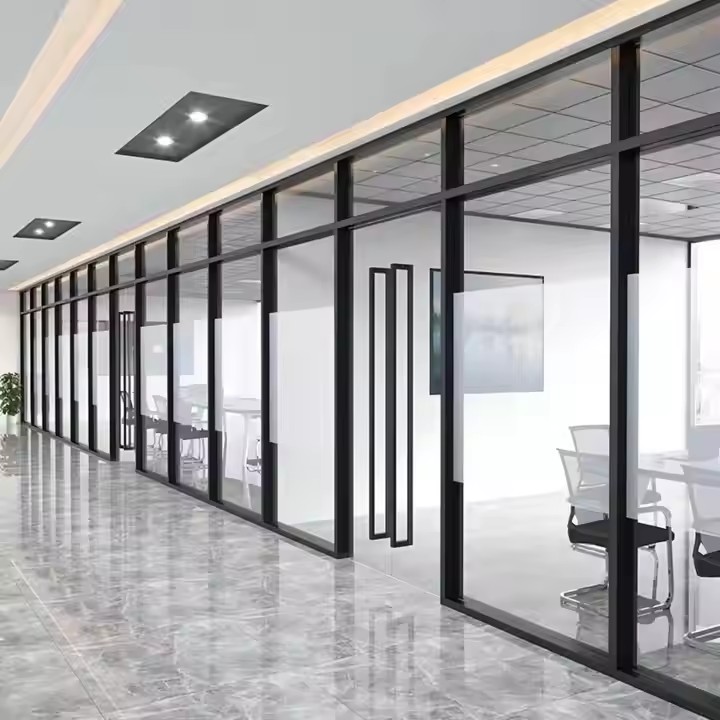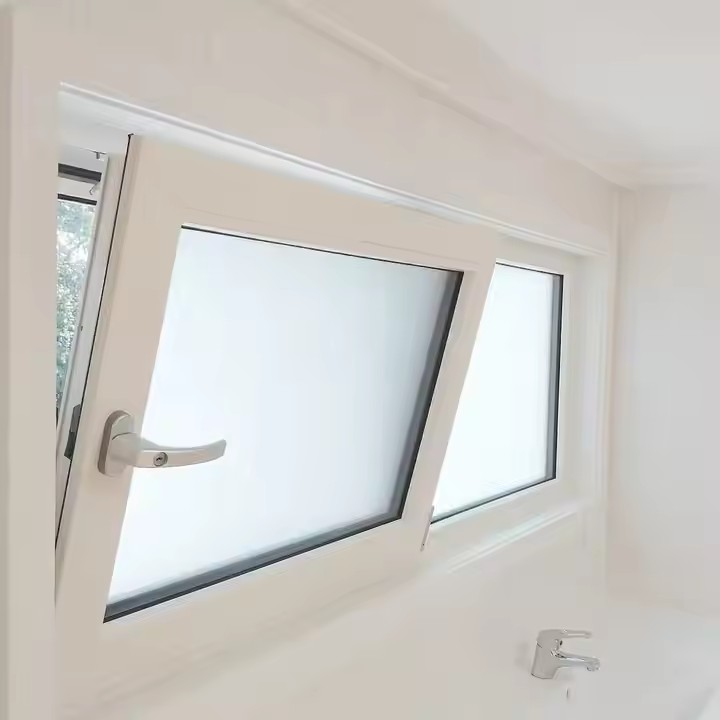I. Core Materials: Prioritizing Low-Carbon, Renewable, and Recyclable Options
The main materials of folding doors — including the frame, panels, and glass — account for over 70% of total material use. Their environmental properties directly determine the product’s ecological value. The design goal is to reduce carbon emissions from the source while maintaining structural performance and long-term sustainability.
Frame Materials: Transitioning from “High-Energy Primary Metals” to “Low-Carbon Recycled Alloys”
Traditional folding door frames are typically made from primary aluminum or steel, which are energy-intensive and carbon-heavy to produce. Eco-friendly upgrades focus on material recycling and performance optimization:
Recycled Aluminum Alloy Frames: Use recycled aluminum alloys that comply with GB/T 3880.2 (e.g., 6063 recycled aluminum). Raw materials come from industrial aluminum scrap such as automotive parts or building profiles. Energy consumption during production is reduced by over 95%, and carbon emissions by 90% compared with virgin aluminum. Impurity levels must be controlled (Fe ≤ 0.4%, Cu ≤ 0.1%), and alloying with magnesium and silicon enhances strength. The frame’s tensile strength should reach ≥265 MPa, ensuring durability under frequent folding operations.

FSC-Certified Solid Wood Frames: For indoor folding doors, select FSC-certified timber to ensure the source is from sustainably managed forests. Fast-growing species like pine or fir are preferred, as well as reclaimed or edge-jointed hardwoods such as teak or oak, minimizing wood waste. Replace solvent-based varnishes with plant-based wood wax oils (e.g., linseed oil, beeswax mixtures). VOC content ≤ 10 g/L, which is just one-tenth of the national limit (≤120 g/L).
Bamboo Fiber Composite Frames: Bamboo matures within 2–3 years, making it a rapidly renewable material. Bamboo fiber composites are produced by hot-pressing bamboo fibers with eco-friendly resins such as polylactic acid (PLA), achieving a density of 0.8–1.0 g/cm³ and a bending strength of ≥85 MPa, comparable to solid wood. The manufacturing process is formaldehyde-free, and the material is biodegradable, leaving no environmental burden after disposal.
Door Panel Materials: Focusing on Low-Formaldehyde, Recyclability, and Functionality
Door panels are the main visual and functional components of folding doors. Their environmental performance should balance formaldehyde-free safety with durability:
Formaldehyde-Free Engineered Panels: Replace traditional urea-formaldehyde bonded boards (e.g., particleboard, MDF) with those using MDI (isocyanate) or plant-protein adhesives. For instance, formaldehyde-free particleboard can achieve emissions ≤ 0.02 mg/m³, well below the E0 standard (≤0.05 mg/m³), with water absorption swelling ≤ 8%, suitable for humid spaces such as kitchens or bathrooms. Some brands use straw fiber + MDI adhesive eco-boards made from agricultural waste, improving resource efficiency.
Recycled Plastic Composite Panels: For outdoor folding doors (e.g., patios, balconies), WPC (wood-plastic composite) panels made from recycled PET (e.g., water bottles) and wood fiber are ideal. Recycled PET content reaches 50–70%. Panels are colorized using masterbatch pigments rather than paints, eliminating VOC emissions. These materials are highly weather-resistant (–30°C to 60°C without deformation), waterproof, and recyclable, supporting closed-loop use.
Glass Panels (Indoor Folding Doors): Use Low-E insulating glass made with float-glass technology incorporating waste heat recovery to cut energy use. The insulating layer is filled with argon gas (≥90%), improving thermal performance (U-value ≤ 2.0 W/m²·K) and reducing HVAC energy consumption during use. Edge seals should use silicone structural adhesive, which contains no formaldehyde or benzene, offers excellent aging resistance, and ensures a service life of 15 years or more.
Hardware Components: Metal Recycling and Low-Pollution Surface Finishing
Though accounting for a small proportion, hardware components (hinges, tracks, locks) can significantly affect overall environmental impact due to metal processing:
Recycled Stainless Steel Hardware: Use recycled 304 stainless steel for critical parts such as hinges and locks. Sourced from reclaimed steel products, production energy consumption is 70% lower than that of virgin stainless steel. The alloy should meet GB/T 20878 standards, containing 18–20% chromium and 8–10.5% nickel, ensuring corrosion resistance equivalent to new material, with salt spray test ≥480 hours without rust.

Chromium-Free Passivation: Traditional electroplating can generate toxic hexavalent chromium. Upgraded eco-processes use zirconium- or titanium-based passivation, forming 3–5 μm protective films that match chromium passivation in corrosion resistance but without heavy metal emissions. Some premium components use powder coating, achieving a paint utilization rate >95% (versus ~50% for conventional spraying) and near-zero VOC emissions.
II. Key Auxiliary Materials: Eliminating “Hidden Pollution” with Fully Eco-Friendly Alternatives
Auxiliary materials — such as seals, adhesives, and lubricants — are often overlooked but are major sources of formaldehyde and VOC emissions. Substitution with sustainable materials is essential for achieving invisible environmental protection.
Sealing Strips: Replacing PVC with Recyclable Elastomers
Conventional PVC sealing strips contain plasticizers (e.g., phthalates) that are volatile and non-degradable. Eco-friendly alternatives include:
TPE (Thermoplastic Elastomer) Seals: Made from SEBS (styrene–ethylene–butylene–styrene) base polymers, TPE contains no plasticizers or heavy metals, with VOC content ≤ 5 g/L. TPE strips can be repeatedly recycled, offering elastic recovery ≥90% (compared to ~70% for PVC) and a service life of up to 10 years, suitable for long-term use.

